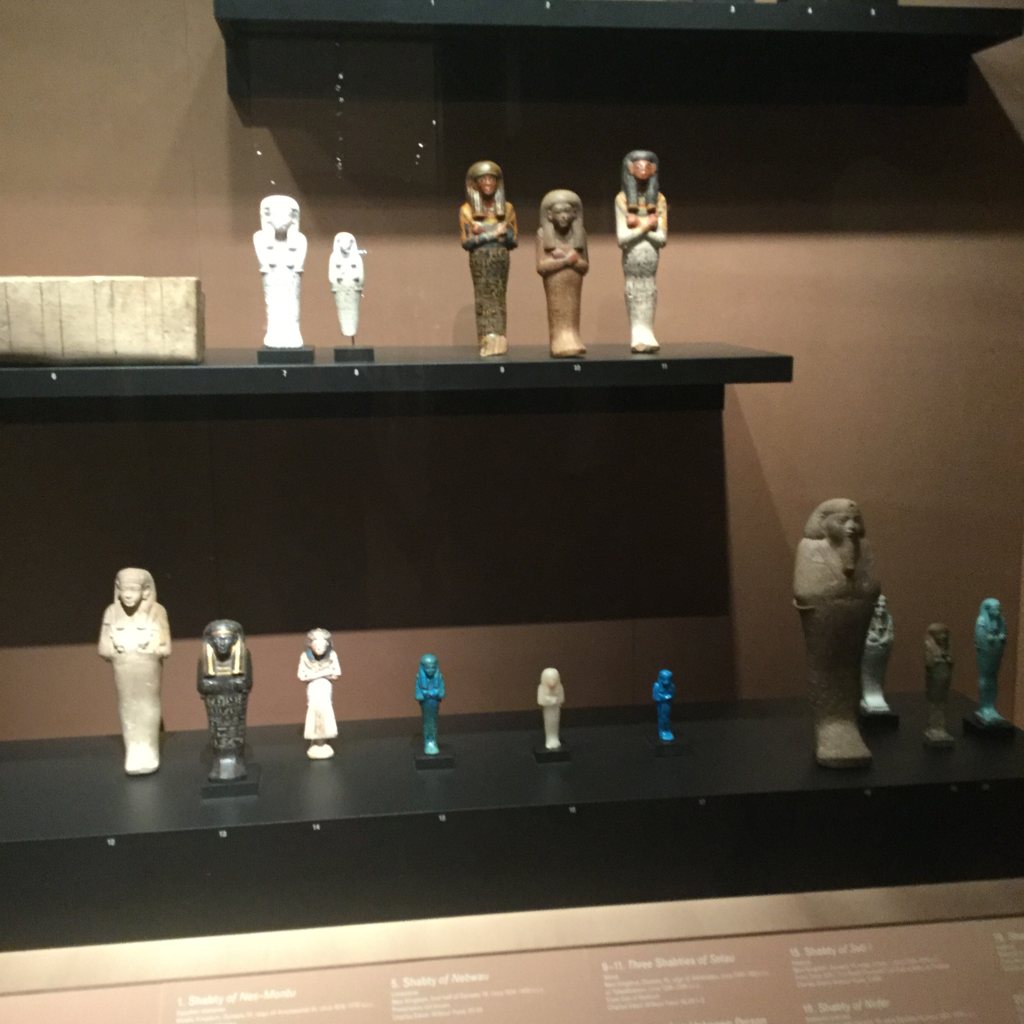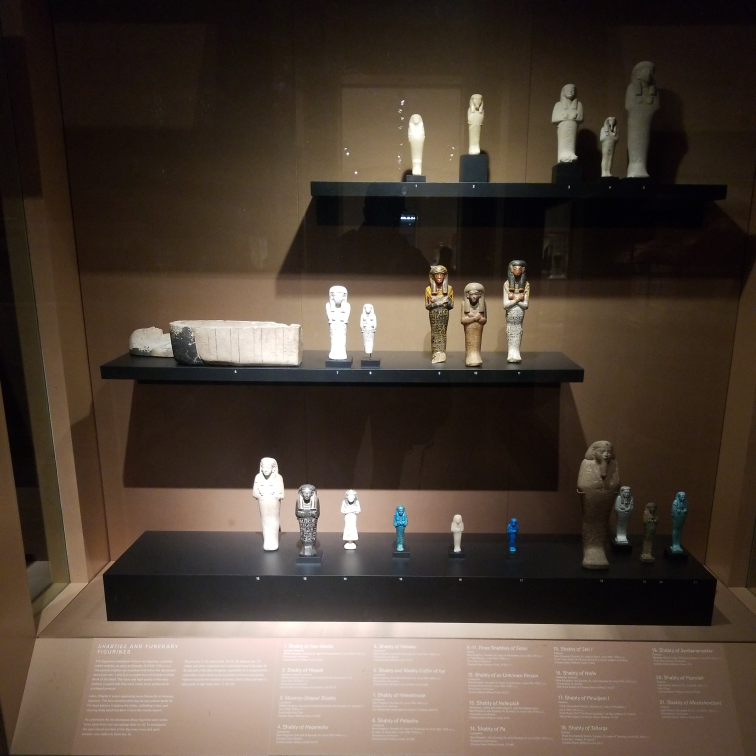

Shabti Coffin of Iuy, ca. 1539–1400 B.C.E. Limestone, Dimensions of Closed Coffin: 7 x 7 x 15 1/4 in. (17.8 x 17.8 x 38.7 cm). Brooklyn Museum, Charles Edwin Wilbour Fund, 37.128E. Creative Commons-BY (Photo: Brooklyn Museum, 37.128E_closed_PS2.jpg)

Shabti Coffin of Iuy, ca. 1539–1400 B.C.E. Limestone, Dimensions of Closed Coffin: 7 x 7 x 15 1/4 in. (17.8 x 17.8 x 38.7 cm). Brooklyn Museum, Charles Edwin Wilbour Fund, 37.128E. Creative Commons-BY (Photo: Brooklyn Museum, 37.128E_NegA_glass_bw_SL4.jpg)

Shabti Coffin of Iuy, ca. 1539–1400 B.C.E. Limestone, Dimensions of Closed Coffin: 7 x 7 x 15 1/4 in. (17.8 x 17.8 x 38.7 cm). Brooklyn Museum, Charles Edwin Wilbour Fund, 37.128E. Creative Commons-BY (Photo: Brooklyn Museum, CUR.37.128E_wwgA-3.jpg)

Shabti Coffin of Iuy, ca. 1539–1400 B.C.E. Limestone, Dimensions of Closed Coffin: 7 x 7 x 15 1/4 in. (17.8 x 17.8 x 38.7 cm). Brooklyn Museum, Charles Edwin Wilbour Fund, 37.128E. Creative Commons-BY (Photo: Brooklyn Museum, CUR.37.128E_top.jpg)

Shabti Coffin of Iuy, ca. 1539–1400 B.C.E. Limestone, Dimensions of Closed Coffin: 7 x 7 x 15 1/4 in. (17.8 x 17.8 x 38.7 cm). Brooklyn Museum, Charles Edwin Wilbour Fund, 37.128E. Creative Commons-BY (Photo: Brooklyn Museum, 37.128E_side_closed_PS2.jpg)

Shabti Coffin of Iuy, ca. 1539–1400 B.C.E. Limestone, Dimensions of Closed Coffin: 7 x 7 x 15 1/4 in. (17.8 x 17.8 x 38.7 cm). Brooklyn Museum, Charles Edwin Wilbour Fund, 37.128E. Creative Commons-BY (Photo: Brooklyn Museum, 37.128E_side_open_PS2.jpg)

Shabti Coffin of Iuy, ca. 1539–1400 B.C.E. Limestone, Dimensions of Closed Coffin: 7 x 7 x 15 1/4 in. (17.8 x 17.8 x 38.7 cm). Brooklyn Museum, Charles Edwin Wilbour Fund, 37.128E. Creative Commons-BY (Photo: , CUR.37.128E_37.129E_emagic.jpg)

Shabti Coffin of Iuy, ca. 1539–1400 B.C.E. Limestone, Dimensions of Closed Coffin: 7 x 7 x 15 1/4 in. (17.8 x 17.8 x 38.7 cm). Brooklyn Museum, Charles Edwin Wilbour Fund, 37.128E. Creative Commons-BY (Photo: , CUR.37.128E_37.129E_mummychamber.jpg)

Shabti Coffin of Iuy, ca. 1539–1400 B.C.E. Limestone, Dimensions of Closed Coffin: 7 x 7 x 15 1/4 in. (17.8 x 17.8 x 38.7 cm). Brooklyn Museum, Charles Edwin Wilbour Fund, 37.128E. Creative Commons-BY (Photo: , 37.128E_37.129E_GRPA_glass_bw_SL4.jpg)

Shabti Coffin of Iuy, ca. 1539–1400 B.C.E. Limestone, Dimensions of Closed Coffin: 7 x 7 x 15 1/4 in. (17.8 x 17.8 x 38.7 cm). Brooklyn Museum, Charles Edwin Wilbour Fund, 37.128E. Creative Commons-BY (Photo: , CUR.37.128E_37.129E_wwgA-3.jpg)

Shabti Coffin of Iuy, ca. 1539–1400 B.C.E. Limestone, Dimensions of Closed Coffin: 7 x 7 x 15 1/4 in. (17.8 x 17.8 x 38.7 cm). Brooklyn Museum, Charles Edwin Wilbour Fund, 37.128E. Creative Commons-BY (Photo: , CUR.37.128E_37.129E.jpg)
Shabti Coffin of Iuy
Egyptian, Classical, Ancient Near Eastern Art
On View: Funerary Gallery 2, Martha A. and Robert S. Rubin Gallery, 3rd Floor
Later, Chapter 6 began appearing more frequently on funerary figurines. The text mentions that they do agricultural tasks for the dead person: irrigating the fields, cultivating crops, and clearing away sand that blew in from the nearby desert.
As substitutes for the deceased, these figurines were sometimes given their own sarcophagi (see no. 6). To emphasize the agricultural function of the figurines, hoes and grain baskets were added to them (no. 8).
Wood (nos. 9–11), stone (nos. 12–14, 16), faience (no. 17), metal, and other materials were used beginning in Dynasty 18. By the end of the New Kingdom, statuettes for a single person were often mold-made by the hundreds and even thousands. Faience became the medium of choice, first in blue and later in light green or light blue (nos. 17, 20, 21).

























































